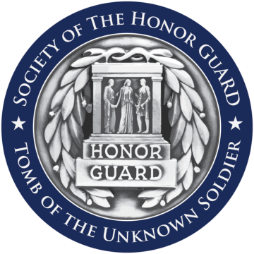
Tomb of the Unknown Soldier
Sacrifice, suffering, and grief are synonymous with war. A nation of families, friends and citizens, mourning the loss of their loved ones, need closure in order to start their grieving process. They need a place that represents this loss and celebrates the service and sacrifice that protect the liberties of free nations. Special days were dedicated for paying tribute to those who served since the earliest days of U.S. history. Yet, at the beginning of the 20th century, there remained no singular place for Americans to visit in order to pay tribute to those who gave all. Considering the amount of sacrifices made throughout U.S. history, it seemed natural when the U.S. Congress enacted legislation following World War I to dedicate such a place.
“We have had no national expression of any sort since the war ended that would give the people an opportunity to show their appreciation of the services over there of the young manhood of the nation and it seems to me it would be a very fine thing for Congress to make some provision for a ceremony that would give the people of the country an opportunity to do that.”
General of the Armies John Pershing
The Tomb of the Unknown Soldier (TUS) was established in 1921. The Unknown Soldiers laid to rest on the east plaza of the Memorial Amphitheater represent all missing and unknown service members who served and made the ultimate sacrifice – they not only gave their lives, but also their identities to protect these freedoms.
The Tomb is the final resting place for the World War I Unknown Soldier, and three crypts contain the remains of Unknown Soldiers representing World War II, the Korean War, with an empty crypt dedicated to honoring our nations missing. The Tomb of the Unknown Soldier is guarded at all times. As Tomb Guards, we stand watch over their graves in humble reverence, ensuring the Unknowns rest in peace.
Tomb of the Unknown Soldier
France and Great Brittan officially began the process of selecting one of their fallen to represent all the dead from World War I in 1919 with their nations unknown warriors being laid to rest on November 11, 1920.
Soon nations that had fought during the war decided to also exhume and then bury one of their own to represent all the fallen. Portugal chose to bring home two Unknown Soldiers who fell in France and Africa, entombing them in the Monastery of Batalha near Leiria on April 6, 1921.
Italy laid to rest their Unknown Soldier on November 4, 1921 in Rome, with both Communists and Fascists standing side by side to honor his sacrifice.
Belgium, chosen by a blinded war veteran, laid their Unknown Solider at the base of the Congress Column in Brussels on November 11, 1922.
The commanding general of American forces in France, Brigadier General William D. Connor, learned of the French project to honor their Unknown Soldier while it was still in the planning stage. Favorably impressed, he proposed a similar project for the United States to the Army Chief of Staff, General Peyton C. March, on 29 October 1919. General March denied the proposal, as it appeared that the Army Graves Registration Service eventually would identify all American dead, thus there was no need for such a memorial. Furthermore, the United States had no burial place for a fallen hero similar to Westminster Abbey or the Arc de Triomphe.
On 21 December 1920, Congressman Hamilton Fish, Jr., of New York introduced a resolution calling for the return to the United States of an unknown American who was killed while serving in the American Expeditionary Forces (AEF) in France and his burial with appropriate ceremonies in a tomb to be constructed at the Memorial Amphitheater in Arlington National Cemetery. The measure was approved on 4 March 1921 as Public Resolution 67 of the 66th Congress.
The body of an unidentified servicemember, killed in France, was laid to eternal rest in the east plaza of the Memorial Amphitheater on 11 November 1921. This unknown American represents all the unidentified and missing from World War I.
Since that time an unidentified American service member has been laid to rest, with the highest honors, representing World War II, the Korean War and the Vietnam War.

Support the Society
The Society of the Honor Guard, Tomb of the Unknown Soldier (SHGTUS) is able to provide our programs, events, assistance, scholarships, and services due to the generosity of its members, organizations, and individuals. SHGTUS does not receive institutional funding. Note: The Society of the Honor Guard, Tomb of the Unknown Soldier is a 501(c)(3) organization, so your contributions may be fully tax deductible.
Learn More
Did you know?
Is it true a Sentinel must commit for two years to guard the Tomb, live in a barracks under the tomb, and cannot drink any alcohol on or off duty for the rest of their lives.
No, this is a false rumor. The average tour at the Tomb is about a 18 months. However, there is NO set time for service there. Sentinels live either in a barracks on Ft. Myer (the Army post located adjacent to the cemetery) or off base if they like. They do have a living quarters under the steps of the amphitheater where they stay during their 24 hour shifts. If they are of legal age, they may drink except while on duty.
